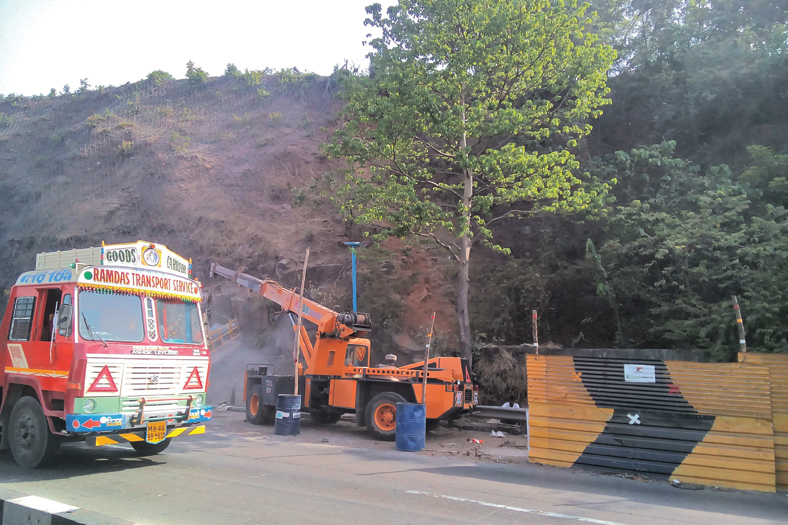Insulation and green building
With the growing importance of going green, building insulation is getting wider acceptance
Green design is the new benchmark of sustainability. Green design is the new style statement. Green design is the new requirement. Building insulation is a key enabler in designing green.
Approaching green design Most of the insulation companies are engaged in green, energy-efficient construction as well as participating in drafting energy-efficient building code. U.P. Twiga is one such name which carried out year-long study on the effect of roof and wall insulation. Since then Twiga came up with several energy-efficient insulation products in HVAC. “Today Twiga is involved in green building movement as a founding member of IGBC,” says Biswajit Roy, Manager – Building Solution, U.P. Twiga Fiberglass Ltd. “Twiga is now also certified by GRIHA. Twiga has also become a member in Singapore Green Building Council (SGBC) as the brand is well accepted abroad for energy-efficient construction.”
Twiga Insul fibreglass wool is also tested for all hazardous content and VOC emission criteria as per the green building product’s assessment guideline issued by Singapore Green Building Council (SGBC).
Then there is Lloyd Insulations, which has been in business for over 56 years in India and heavily influenced by sustainability issues as a habit. Its line of business includes thermal insulation, noise control and acoustical engineering, which are major contributors to comfort of the occupants of the built environment. “We are pioneers of insulation industry in India whose major role is energy conservation,” explains N. Srinivas, Mentor, Lloyd Insulations (India) Ltd. “We have propagated the value of thermal efficiency even when energy costs were low. We contributed towards upgrade of insulation standards by the user industry in this country.”
Product and process development activities of Lloyd are aimed towards their contributing least detriment to environment. Hazard-free and safe disposal of manufactured materials and maximum use of recycled raw materials (like slag from foundries and steel plants) are primary concerns at all times. Mr Srinivas adds, “We have contributed to instil the concept of scientific evaluation and bench marking of insulation performance by large users of our products and systems. The company has contributed to drawing up every national standard for materials and application codes in the fields of thermal insulation and acoustics.
“Environmentally harmful asbestos products which were specified and regularly imported by large users like ship builders and railway coach plants during the 60s and the 70s in the country. As leading applicators, we were instrumental in educating specifiers of the detrimental issues related to asbestos to the health of applicators and users, thereby being instrumental in discontinuation of this genre of materials by developing safe alternatives offering superior performance.”Lloyd is one of the pioneers in working towards replacement of ozone depleting substances in manufacture of polyurethane products. It has adopted these environmentally safer substitutions way ahead of time limits of the Montreal Protocol. “We have promoted ‘dry’ construction concepts with our PEB for building structures, pre-insulated building panels, dry wall construction offerings minimising or eliminating use of construction water,” shares Mr Srinivas. “Lloyd Insulations, therefore, has all the check boxes ticked as far as green issues are concerned.”
Taking businesses to the next levelIn order to take any business to the next level, an organisation needs focus on several; different things: leadership, marketing, innovative products and so forth. According to Mr Roy, “Knowledge sharing is the key. Twiga actively participate extensively in technical meetings and exchange knowledge with various other insulation manufactures from different developed countries.”
Twiga has adopted optimum design to achieve best available solution. In next 5 years Twiga will venture in all probable segments of insulation.
“Being a technology partner of Isover Saint Gobain, Twiga’s quality assurance policy is quite strong, and we will maintain the same,” assures Mr Roy. “The R&D centres in Twiga’s facility consistently test the products to check fibre distribution, loss of ignition, density and lamination quality as well as develop upon more user-friendly and tailor-made solutions for projects. Twiga also is instrumental in promoting special lightweight insulation products for marine and industry segment.”
Lloyd Insulations — in order to take the business next level — works with leading designers and architects to create environmentally better and thermally more efficient built environment to match standards that are evolving in the field. “Design and detailing capability assumes a significantly prominent position as we go forward,” says Mr Srinivas.
Sustainability in architectureThere is no substitute to being fully conscious of sustainability issues as an organisation proceeds in any field, primarily in activities related to creation of built environment for the future. Profligacy of past practices cannot be sustained in the context of increasing population, depleting resources and higher usage of products and services by the generations to come. “We have to recognise that what we create today would survive for the next 40 to 50 years, performing efficiently if we build them right or wastefully otherwise,” explains Mr Srinivas. “It is our responsibility to see that they consume resources like energy at levels no higher than the optimum all through their service life. How to create sustainability is dependent on the passion with which we pursue our actions. It can offer fairly high levels of excitement to an otherwise dull profession.”
“Sustainability in architecture can only be achieved through sustainable material and sustainable practice,” believes Mr Roy. “In some developed countries, it called passive architecture that uses insulating material like fibreglass wool for improving energy efficiency. Right from the building envelope design to reduce temperature loss in a HVAC duct or chilled/hot water pipe insulation material contributes a lot towards efficient use of energy and reduction of CO2 emission.”He continues, “Material selection is also quite important as embodied energy and performing life of various materials can be widely different. Inorganic material’s manufactured from abundant raw materials and that devoid of petroleum by-products should be considered more. On the other hand materials with recycled content should be encouraged provided the recycled content does not affect the performance parameter or performing life of the material in long run.”
Important products for green designsLloyd Insulations has a long list of products for exceptional thermal insulation. Its metal faced pre-insulated building panels with this highly efficient and structurally strong core are self-supporting and easy to erect in place. They afford exceptionally short building completion schedules. In-situ application capability of this family of materials eliminates use of adhesives, which are normally solvent dispersed. Buildings featuring spray applied polyurethane with ETICS represent the most energy-efficient roofing solutions to built environment.
Lloyd’s major products are PEBs, which are pre-fabricated and capable of being re-sited easily; mineral wool insulation, which is manufactured with naturally occurring minerals and partly recycled materials; and polyurethane products.
While talking about green products for building insulation, Mr Roy talks not only about products but also about the solutions:
Building envelope: Twiga products like faced and un-faced fibreglass wool insulation boards are suitable for underdeck, cavity wall, wall lining and facade assembly.
HVAC: Twiga Insul is recommended for duct wrap and pipe insulation for central air conditioning systems. Twiga also provide flexible insulated or un-insulated ducts and prefabricated non metallic duct boards against conventional metal ducting plus insulation.
Drywall partition: Low density resilient fibreglass wool helps achieve high acoustic isolation in dry wall partition without increasing the load in the assembly.
Pre-engineered factory buildings and light gauge/pre-fabricated structures: Tough and flexible insulation blankets of customised length with special facing and tabs are applicable for metal building roof and wall insulation. The product is easy to handle, install and meets best thermal, acoustic and fire-safety features.________________________________________
Sustainability in architecture can only be achieved through sustainable material and sustainable practice.
Biswajit Roy, Manager- Building Solution, U.P. Twiga Fiberglass Ltd._________________________________
Design and detailing capability assumes a significantly prominent position as we go forward.
N. Srinivas, Mentor, Lloyd Insulations (India) Ltd._____________________________________
26
Cookie Consent
We use cookies to personalize your experience. By continuing to visit this website you agree to our Terms & Conditions, Privacy Policy and Cookie Policy.









